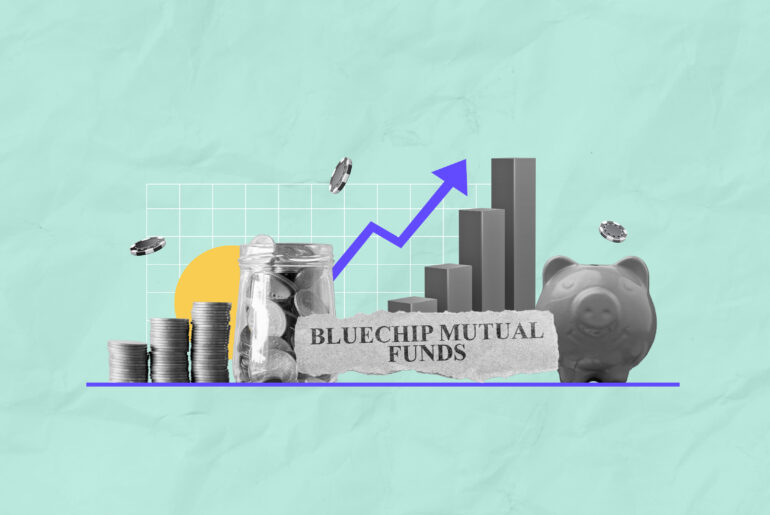Last Updated on May 24, 2022 by Anjali Chourasiya
Based on an investor’s risk appetite, the investing world provides a plethora of options. Some may offer stellar returns, while others may carry too much risk. In the same light, mutual funds vs chit funds make for a popular debate in a country like India.
Both these funds are hugely popular with investors and often are compared for similar functioning. But the difference between chit funds and mutual funds are stark and calls for investor caution before investing. Let us read these investment options in detail.
Table of Contents
What are mutual funds?
Mutual funds are a type of investment instrument wherein money is pooled from institutional and individual investors and then is collectively used to invest in various financial instruments like equities, bonds, money market instruments, and others. Professionals manage the corpus who have sound knowledge of the markets.
These funds are largely liquid and tax-efficient. Investors can test the equity markets with considerable risk management. The entire amount that is invested is referred to as the portfolio of the fund, and it is managed by an Asset Management Company (AMC).
What are chit funds?
Chit funds have been used as an investment and credit facility (predominantly in Southeast Asian countries) for several years now. In India, people have run chit funds for more than a century now. They are organized either formally or informally (usually by family, friends, neighbours, relatives, and so on). They are also called chits, chitty, or kuree in different regions. They have been recognised as an important microfinance instrument.
A chit fund is a rotary saving scheme where several individuals contribute a certain amount periodically. This occurs for a predetermined period (usually many months as there are a number of members).
Here, a trusted organiser gathers members known as subscribers. They each contribute a certain amount every month. After the collections, a lucky draw or an auction is held to determine who gets to borrow the sum collected. In the case of an auction, the person who bids the lowest value for the sum collected is declared the winner. Then, the difference between the collected and the auctioned amounts are distributed amongst the subscribers. This process is repeated every month until the chit fund ends.
For instance, if there are 20 subscribers for a fund and they each contribute Rs. 2,000 per month, the amount collected at the end of each month would be Rs. 40,000. If, during an auction, an individual bids for Rs. 38,000, and it is the lowest bid, it means that the individual will take Rs. 38,000 from the Rs. 40,000 fund. Then, the excess Rs. 2,000 is distributed equally amongst the other members, each receiving Rs. 105 (rounded).
Difference between mutual funds and chit funds
| Point of Difference | MUTUAL FUNDS | CHIT FUNDS |
Method of Operation | Money is pooled from investors and invested in securities. | Individuals contribute a certain amount to the fund each month, which is then auctioned off to one member. |
Operated by | Fund houses or Asset Management Companies (AMC) | Formally, a financial institution. Informally, a trusted person for all the subscribers. |
Expenses | AMCs take a certain percentage of the profit, usually 2-3% | Organisers charge 5% or more for the services rendered by them |
Reason for Investing | Usually, to gain returns on surplus income | As a short-term investment or borrowing source. |
Minimum and Maximum Value | Systematic Investment Plans (SIPs start from as low as Rs. 500) Usually, there is no maximum value. | Legally, the maximum chit amount varies according to the number of subscribers. |
Rate of Return | It is not fixed and is based on market performance and the fund managers’ strategy. | It varies from one to another. |
Level of Risk | Varying levels of risks for different funds. They are also are subject to market risk. | Unregistered chit funds are highly risky due to a lack of regulation. There are several instances of fraud. |
Maturity Period | No specific date or tenure. Investors can exit the fund at any time. Investors can choose to invest for the short, medium, or long term. | Usually, it lasts for as many months as there are members. |
Types | Open-ended and Close Ended in terms of entry and exit from the fund. Equity, money market, debt funds in terms of types of investments. | Registered and unregistered in terms of officiality. |
Level of Liquidity | Relatively high level of liquidity. There exist mutual funds where investors can withdraw their money even after one day. Usually, AMCs charge a fee called the “exit load” if an investor wishes to withdraw their funds before a stipulated period. This applies to open-ended mutual funds only. | Formally, funds can be withdrawn from the chit after the chit’s organizer’s approval. Approval is given for specific reasons only. Informally, members can exit after paying a nominal exit cost. |
Tax Efficiency | Different mutual funds (equity-based or debt-based, or hybrid) have different tax rates for short and long terms. | The returns from chit funds are not usually taxed, but they must be declared while filing for income tax returns. |
Which is the better option – mutual funds or chit funds?
Mutual funds being professionally managed may deliver market-linked returns to all stakeholders, not just the one subscriber as with chit funds. Also, it is crucial to thoroughly evaluate the performance of a mutual fund in the past, the nature of the management, risk ratios, and other factors before selecting a mutual fund to invest in.
There is no clear and concrete answer for this question on which among the two is better as it all depends on what the investor hopes to achieve through investing. Each investment has a particular set of pros and cons associated with them.
An ideal solution would be to evaluate what an investor wishes to get out of investing the sum, the willingness to take risks, duration of investment, and other such factors like weighing the pros and cons of both of the avenues and deciding in accordance with their overall financial plan.
Conclusion
Mutual funds and chit funds, though, carrying similarities in various forms are starkly different. Likewise, they carry different risk and return profiles. The risk may be higher with chit funds when compared to mutual funds. They also intricately differ on parameters of liquidity, taxation, etc. It is paramount to access your risk appetite and only then invest in either of the schemes. Consult your financial advisor before investing in any scheme or fund.
- How To Declare Mutual Funds in ITR & Disclose Capital Gains in India? - Jun 6, 2025
- How To Sell or Exit Your Mutual Funds in India? - Jun 6, 2025
- Fund of Funds (FOF): Meaning, Types & Advantages - May 13, 2025





